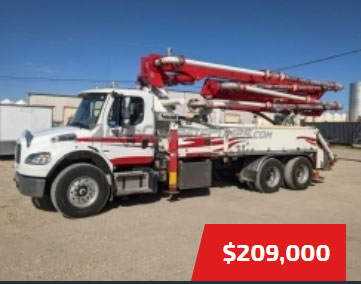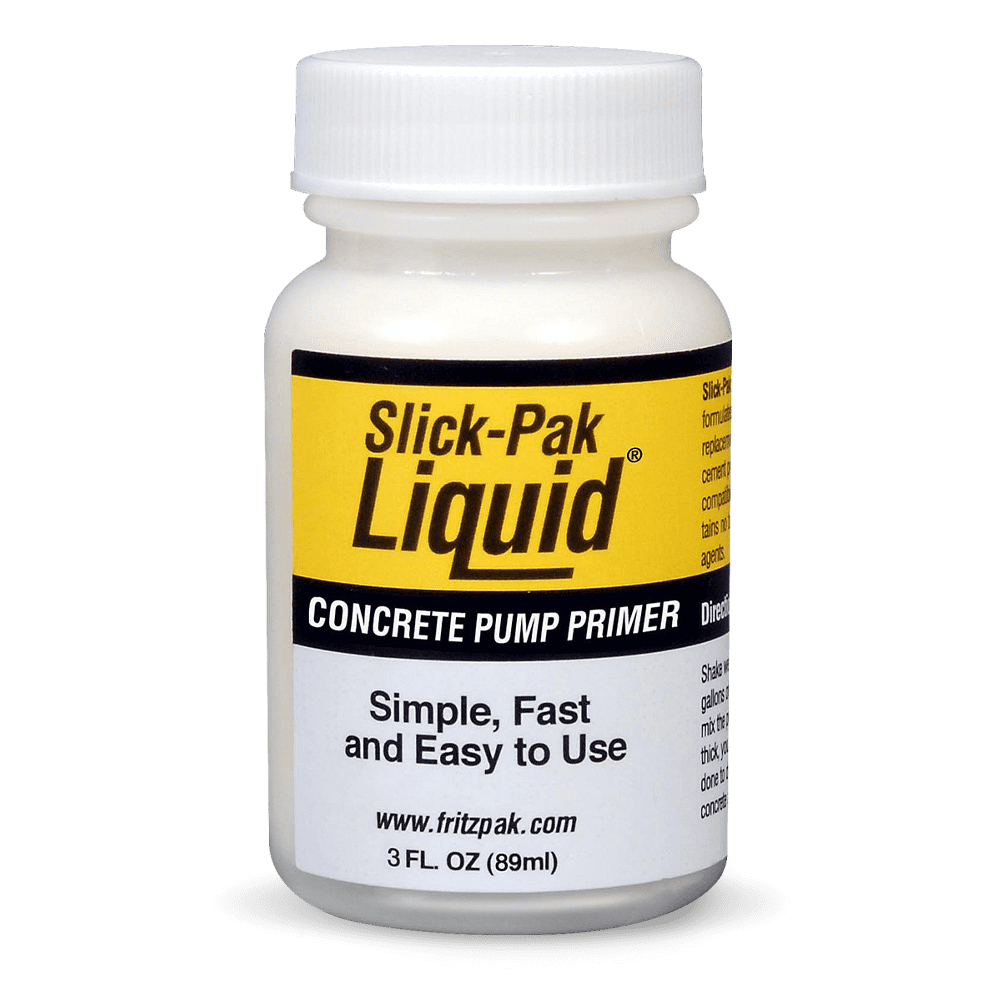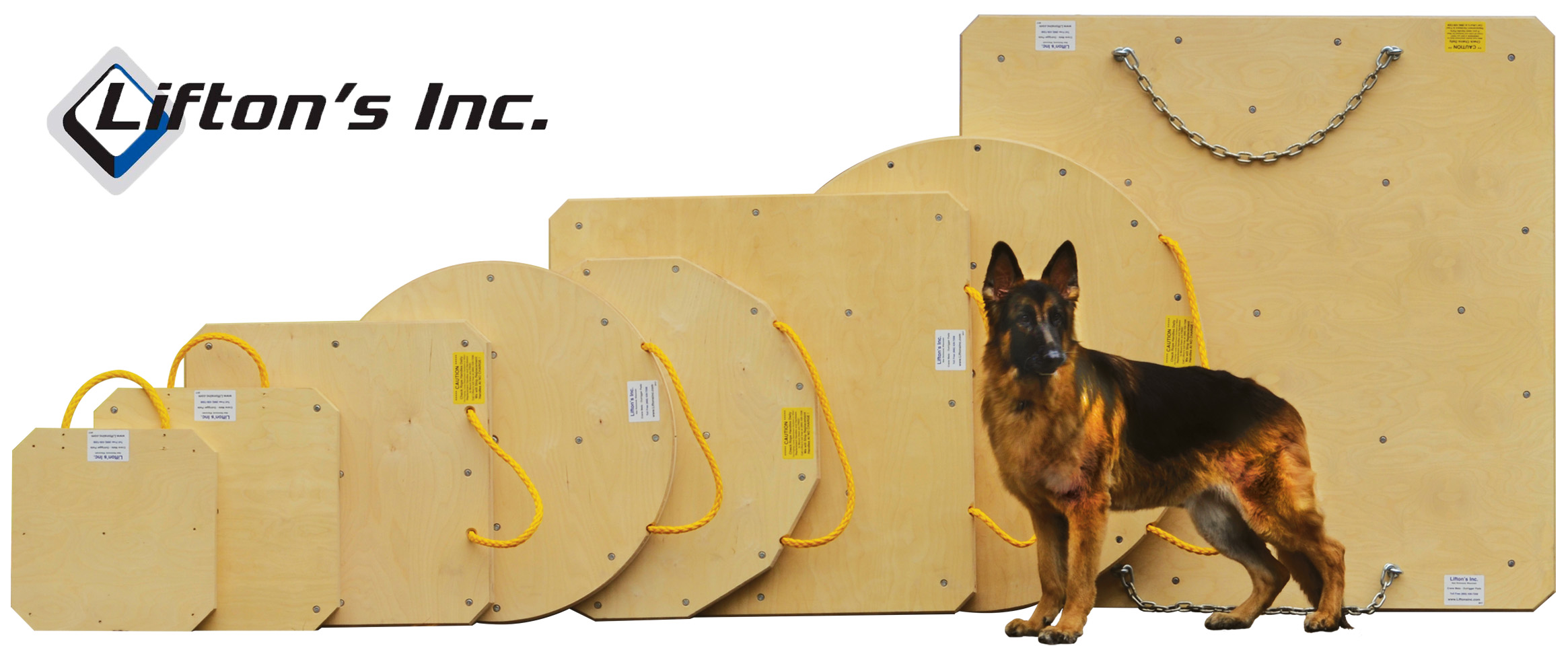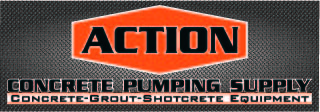At the Job Site
As we pull up to the job site, having found the right place, we need to start looking around. Do you see a gate? Is there a construction entrance? Is anyone there yet? If you are uncertain as to where to enter, stop. This is a good time to walk the site. Find someone in charge and ask. Never pull in across a driveway or approach unless instructed to do so, and remember who told you to do it. Your pump is heavy and can easily break a sidewalk or concrete approach, and guess who gets the back charge! Always have the customer tell you where and when to come in. being on time will allow you to find a foreman and check it out. While walking around there, notice the job. Look around the area that you will be working. Remember that you are not only looking for a place to drive, but also an imaginary cube in space with dimensions equal to the length of your boom. This area should be free of obstructions, trees, and power lines and light poles. Anything that may be in the way of your boom work. If you have a 100’ boom, you need at least 100’ in all directions clear. Notice the ground. Do you see tracks from other vehicles? There are clues here. Any wet spots? Do you see fresh backfill? If so, ask. One of the most deceptive things that you will encounter is the newly graded spot the customer made for you to set up. Yesterday it may have been a pond covered with dry soil or sand just hours ago. Think it will be solid? Not. When you see these potentially unstable areas, avoid them if possible. If you must set up there, use extreme caution. This will be an opportunity to either get stuck or possibly turn the boom over. Again, notice what other traffic is telling you about the area. Even footprints are clues to the ground condition. There are 4 things to live by when looking at a set up.
1. Space..... Room enough for you to set up fully and safely
2. Level...... is it near level, it can be rough as long as the overall grade is level or even a slight downhill.
3. Access.......does the spot in question allow you to get two trucks in easily?
4. Reach...... can you reach all that you need to from this spot?
If you can satisfy these 4 things, chances are you will have a good set up.
As you pull in toward this spot, having looked it over and even pacing the reach to make sure that the boom will reach the far end of the pour, notice the ground again. What are the front tires doing? Are they solid? Are they sinking 6” or more? If you are plowing your way in, consider another spot. If nothing else is available, check with the customer to see if they have a tractor and some sand or dry material to spread in the set up area. Sand or base is great but not always available. If nothing else, see if the soft stuff can be scraped off the top, giving you some solid ground. You don’t have to sink to be stuck. Sitting in wet soil all day and working, spilling the smallest amount of water can make you a part of the landscape. Some soils have enough clay content, so that any water spilled will be like ice when trying to drive out. Try to avoid getting stuck, even a little. The pump has few places in the rear to pull from. It is very easy to tweak a pump and damage some part of the pump cell when hooked up to a cable getting yanked out. If you become stuck, its almost better to use your outriggers to lift your rig and fill in the ruts or lay down heavy lumber to make a road to drive out. Use caution when laying down wood to drive on, it can easily break up and pop up in the frame area and take out an air line. You are then real stuck. Never drive into a place where it is obvious that you will be stuck unless your office orders you to do so. You are not only responsible for that pour, but also for that machine coming back undamaged. Whenever in doubt, call in and have the office assist you in working out the problem before it becomes a serious problem. That’s what the office staff does, let them make the call. Try to avoid pulling up to the form as close as you can get. Leave a little space in front of your truck. If you are stuck at the end of the day, you may be able to move forward 3’ and work the truck out. If you are against the form, you can only go back, and if stuck, you go nowhere! Have a place to go even if it is only 3’. This will allow you some area to work with. While driving in and noticing the soft soil, keep in mind that you must put out riggers on the same ground. Even if you get into a bad place like this, can you put the riggers down on it and expect the ground to support the weight of the pump? It may be a waste of every ones time even driving in there if you cannot get the riggers solid. Let’s assume that you have pulled in and the ground is marginal. You made it but may have a problem getting out. It’s soft. The first thing you must do is to establish which outriggers will be under the heaviest load while the boom is out. While booming over these riggers, they will probably sink a bit. You must use dunage under all the riggers and you probably only have so much to go around. Find the priority spots. If your job means that you will be boomed over the cab all day, the front two are the most important. The rears are important too, you must be able to open up over them but you can do so with out putting a heavy load on them by going straight up and then rotating the boom until it is over the best riggers. If you have the wood or plates there, use them under all riggers, every time you are on soil. Now the front riggers. Piling wood up is not the goal here. That will not help you stay up. What you want to do is make as big of footprint as possible. A full sheet of plywood if necessary. Remember that this is thin, so you will have to lay 2x4 across the plywood or whatever you have. Put the first layer down, the footprint, and then layer across the top of that. Each layer should cross the previous layer. As you ad a layer, it should get a bit smaller each time working toward the size of the outrigger foot. When finished, it should look like a pyramid. This works because the load is transmitted through the foot, say for example, 1sq foot, to a huge area, maybe 8 sq feet. If there is 20,000 lbs of load on the 1 sq foot, then the same 20,000 lbs is split up when placed on an 8 sq foot pad. Each sq foot is only supporting 2500lbs when using the pyramid. It is much easier for the ground to support 2500 than 25000lbs per sq foot. The total weight has not changed; it has been re-distributed over a larger area. You are distributing weight all across the footprint. If you just simply layered one layer the same size as the last, all your load would be where the steel foot is sitting, not using the larger footprint of the mat you have just built. It will punch through and you will have problems. When using the pyramid, you distribute the weight from one layer to the next in increasing area, resulting in less weight per sq inch that is on the soil. The ground may hold 10 lbs per sq inch, but will not hold 100. Spreading the weight around is all you are doing. When spreading the weight around a larger area, there is less of it; so, your machine is stable. Stacking wood and just building up will not work because all you have done is apply the load straight down, not around. You must be an engineer of sorts to do this. It takes a little common sense to be done right. Never cheat on soft soil. Do not let anyone hurry you or convince you that it’s ok. My favorite is the guy that tells me that he drove his pick-up in there yesterday, and had no problem. I don’t think a customer ever wants to get you stuck, he wants his concrete pumped. He will tell you whatever he has to in order to make that happen. As customers, they don’t know how dangerous something as simple as the ground can be. It’s your job to know and understand how to deal with soft and/or wet ground. The job, the pour and the machine are all your responsibility. Take care of business. If you cannot get enough wood or whatever to stabilize the machine, do not set up until consulting your office. Figure this out immediately, some one may have to hold mud, time is critical. If the pump cannot be set up safely, it is pretty useless and very dangerous. If you pull into a place that is so bad that the redi-mix trucks will have a hard time even getting to you, you have just defeated the purpose of having a boom pump there. Look for alternatives. Adding hose, backing away from this soft spot, or even a bigger boom set up farther back, think of what will work and discuss it with the customer and your office. The goal is to pump concrete, not tear up equipment and generate revenue for the Tow Company. That is always a battle best avoided. No body wants to pay for a tow truck, but every body will tell you where to set up. Use your best judgment and your experience. Use your office for advice and support. Be professional.
Lets assume that you have good access for redi-mix, solid riggers, and can reach what you need to. Its time to prep the pump. Many guys use tarps to cover the area of the pump that's not going to actually be getting mud poured in it. The hopper is all that can be seen on many, i do this myself. It helps keep the paint there and will lessen the wash out time because you do not have to scrape and scrub the whole truck. So, if you do use tarps or what ever, put it all in place. Oil whatever you usually do, using care not to get anymore on the ground than absolutely necessary. Remember all the work you put into just getting set up? Don’t blow it by spilling oil or water behind you and contributing to the problem. Get with the customer and maybe the inspector and find out what they expect of you and discuss water control. Avoid this responsibility if possible. Keep in mind that if you blow it, you probably bought it too! If you are to add water, do so sparingly. Let them tell you how much and when. Ask about the hose for the pour, or any other pieces that they may want, like a velocity reducer or whip end. Have all the info before mud arrives.
Cycle the pump as soon as possible. If there is a problem, find it as soon as possible. Don’t wait until concrete trucks are lined up in the street to find that your machine has malfunctioned. Again, time is the enemy; you have little to spare. Be prepared to make adjustments also. If the ground was bad and you did build a large pad for the riggers, expect them to sink a little. As you open your boom, watch all of them carefully. Remember that if a rigger gets loose on one side, which means that the opposite corner has gone down. You may raise the one sinking or take the slack out of the one that is loose. When taking up the slack use caution. When you contact the ground with this rigger, and go more, you are applying more pressure to the opposite outrigger also. Use care and avoid pushing the other side down and making the situation worse. Remember that the load from outriggers is transmitted in a “x” pattern. If the right rear is sinking, the left front will get loose. Keep an eye on the riggers always. I have seen a boom set up pumping for hours when suddenly an outrigger collapsed for whatever reason. Look for signs, like ground cracking around the pad, opposite side getting loose and seeing the overall level of the machine. Step back and observe the pump. Does it look level? This all takes some practice and will come easily after awhile. Every set up is a learning experience as each set up is different each day. Use what you have learned. The way you set your pump is how the pour will go. If you did it well, the pour will be smooth and steady. If not, you will be stopping constantly to fix an outrigger or adjust and the pour will suffer. Set it right, pour it right, finish right.
The next chapter will be on the boom, the prime and starting the pour now that you are set up well. We will come back to set-ups at a later time and look at some problems with obstructions and power lines. Before we finish here today, one more point. Know the rules on power lines. Live by them, or die with out. We will discuss this more, but for now, learn the rules. I will not quote them to you yet. Go to your manager and ask. Your company will have strict policy on wires, follow the rules on this one, with no exceptions. You may get away with some other things while on a boom pump; however, one time too close to a power line will be your last. Any body that has been pumping for a few years knows of a pumper that was killed here in the wires. It is not negotiable. Please visit the safety page here at this web-site for some more reasons to know wire policy and the effect of ignoring these important rules.
Written By Horton, Lee Published by ConcretePumping.com




















.jpg)
.gif)

.jpg)








.jpg)









